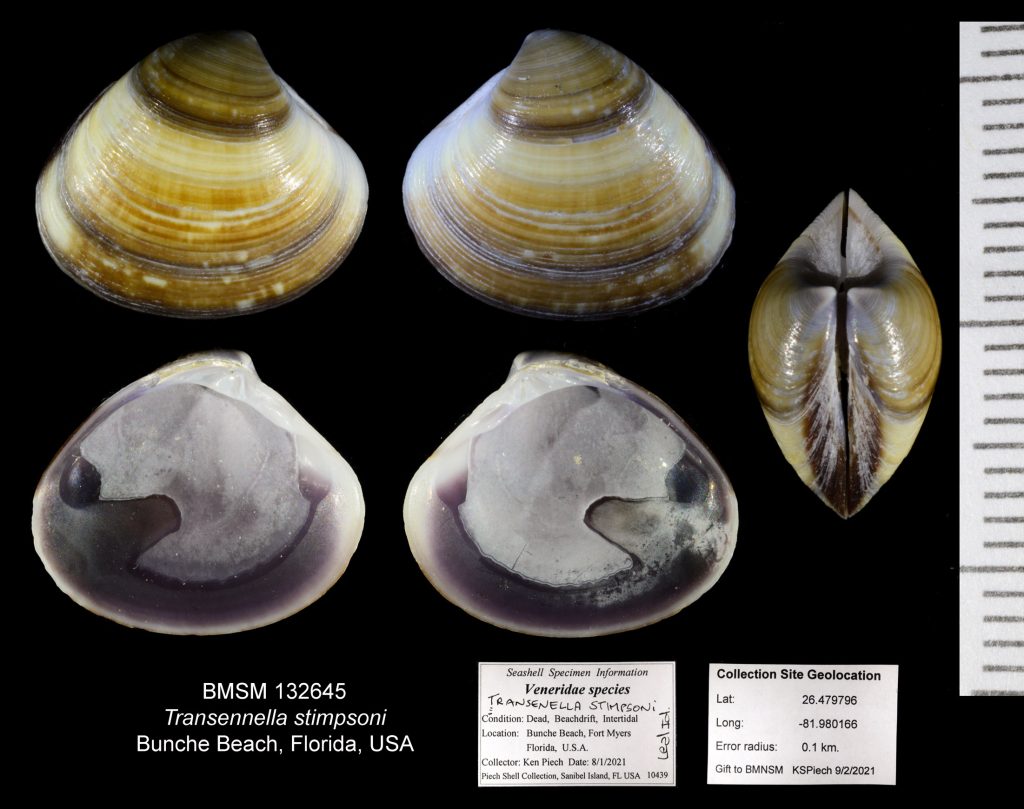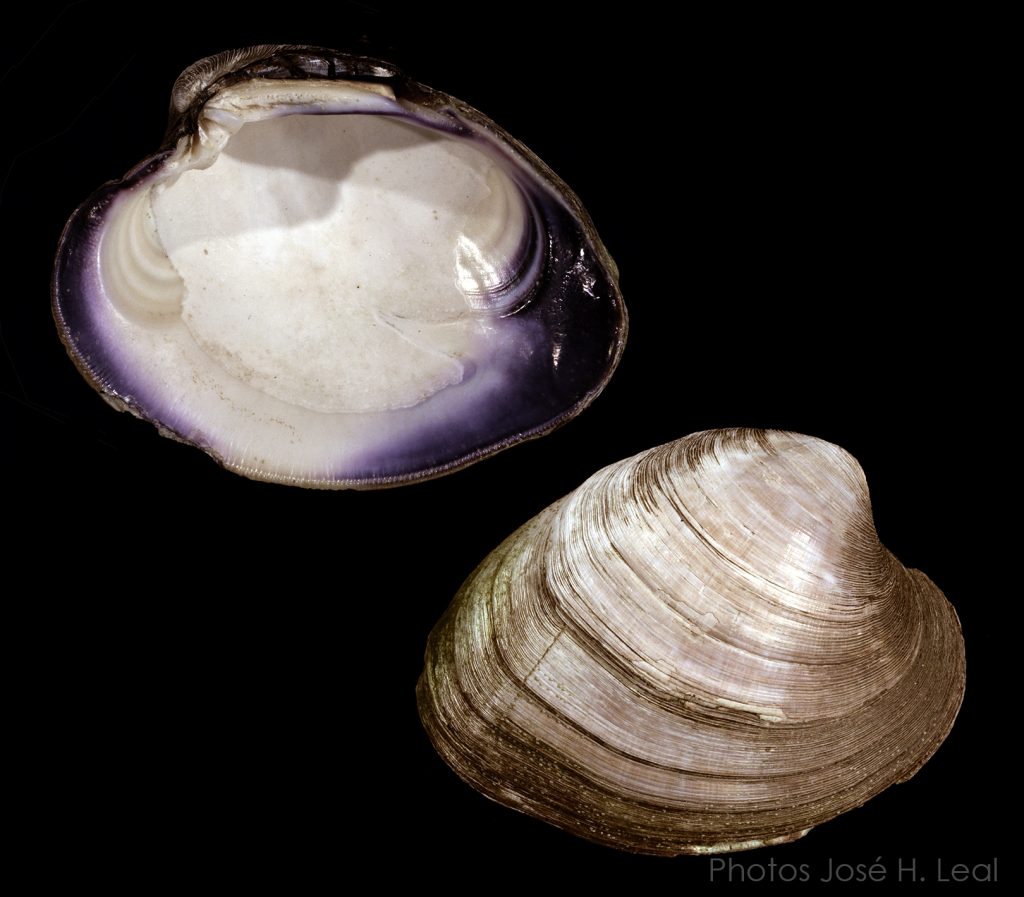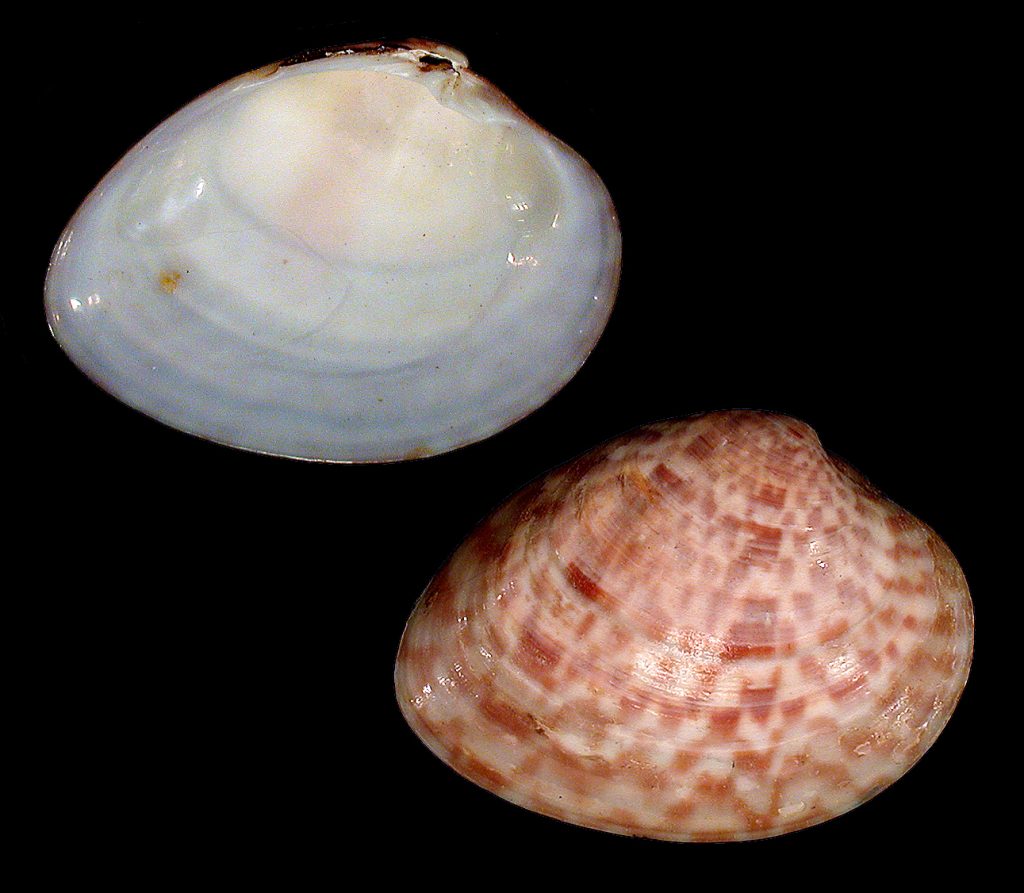Shell to 14 mm in length. Shell rounded-trigonal, shell surface smooth except for very low commarginal ridges. Inner edges of valves marked with microscopic oblique lines. Pallial sinus rounded, relatively short. Color white, often with brown or violet chevron-like markings, internally with infused with purple. Periostracum varnish-like, yellowish. Compare with locally occurring Transennella conradina, which is more pointed posteriorly and lacks the purple color. Also known as Stimpson's Transennella. This unusually dark shell was collected by Ken Piech on August 1, 2021, on Bunche Beach, Fort Myers, Florida. It is a new record of the species for the general area.
Read More









